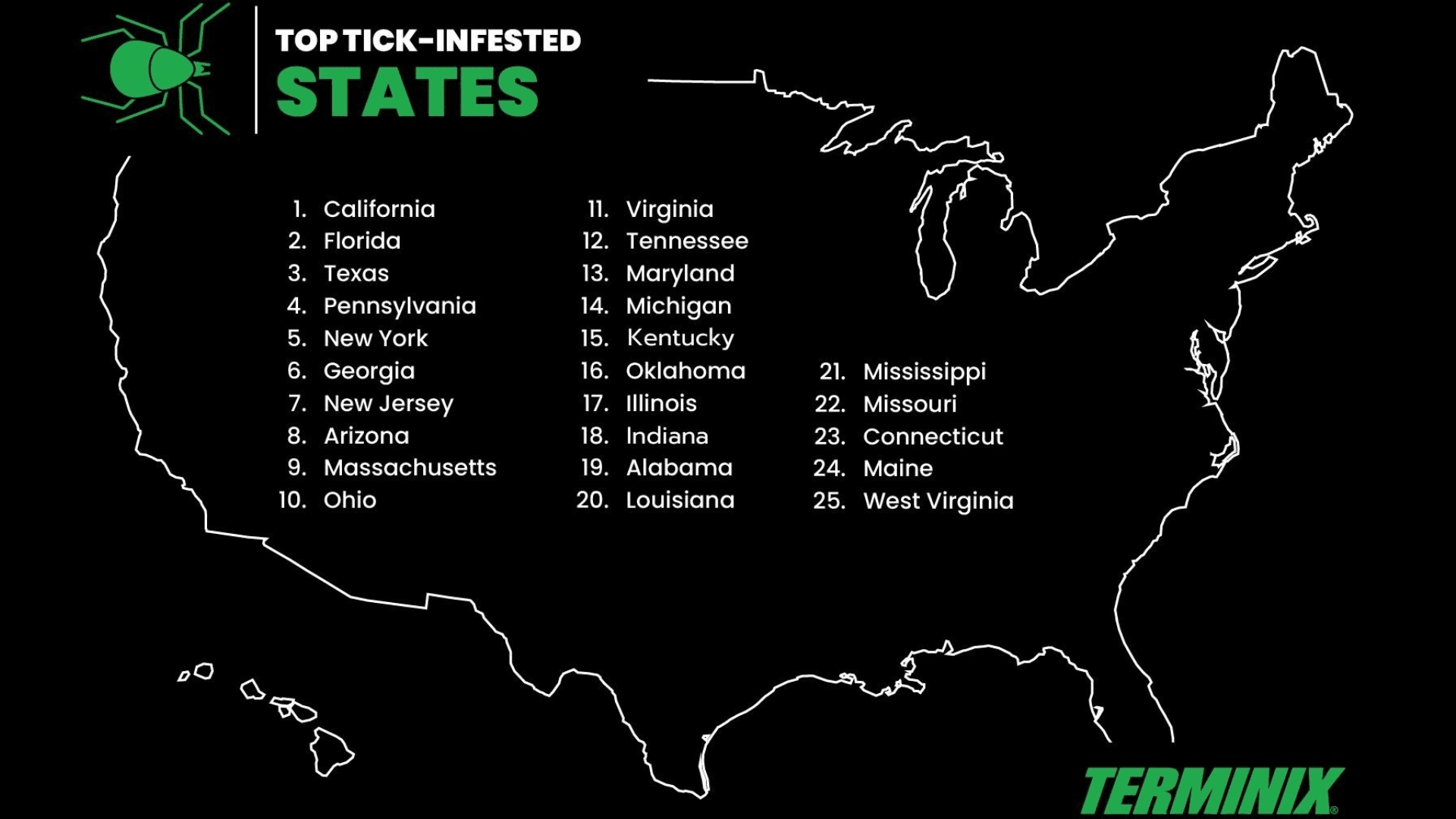
MEMPHIS, Tenn. – With tick activity hitting alarming highs this summer, Terminix, a Rentokil Terminix company, announced its first-ever comprehensive ranking of the Top 25 Most Tick-Infested U.S. States.
Based on proprietary 2024 pest management data, this report reveals which states are facing the greatest tick pressure and risk of tick-borne illnesses. This first-of-its-kind list arrives at a critical time, offering homeowners and outdoor adventurers new insight into how geography and climate are shaping tick populations across the country.
States like California, Florida, Texas, Pennsylvania and New York are at the top of this list due to their warm climates, high humidity and abundance of green spaces. Notably, New York City, Los Angeles, Philadelphia, San Francisco and Washington, D.C. rank as the top five tick-infested cities in the country, underscoring that even densely populated urban areas are not immune to tick activity.
Overall, the Northeastern region of the U.S. generally experiences the highest populations of ticks, with common species including the black-legged tick and the American dog tick.
“This isn’t just a nuisance; tick activity is reaching new levels across the country, posing a serious and growing public health threat,” said Tom Dobrinska, technical service manager at Terminix. “Climate change continues to increase tick populations. As winters become milder and warm seasons increase in length, tick survival and risk for human exposure increase significantly.”
Top 10 Most Tick-Infested States:
California
Florida
Texas
Pennsylvania
New York
Georgia
New Jersey
Arizona
Massachusetts
Ohio
While not all ticks carry illness-causing pathogens, disease risk can vary by tick species. According to the CDC, Northeastern states like Pennsylvania, New York and New Jersey, as well as parts of the Upper Midwest, are often identified as the worst places for ticks in the U.S. due to their high rates of Lyme disease cases. Southeast and Southcentral U.S. might see more cases of ehrlichiosis or spotted fever rickettsiosis.
“Scientists and public health experts are constantly researching ticks to better understand the threats they pose,” said Dobrinska. “As these experts continue to monitor tick activity and disease spread, it is essential for the public to stay informed about the dangers and know how to prevent tick bites.”







